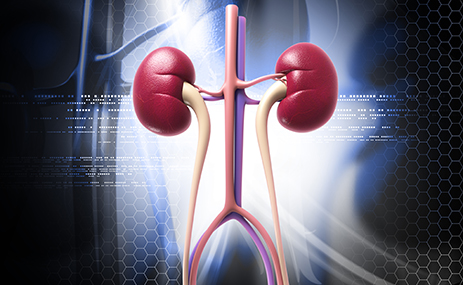Contrast Induced Acute Kidney Injury (CI-AKI) is associated to increased costs and unfavorable results after hemodynamic procedures. Its incidence ranges between 2% and 7% according to the most recent literature.

Multiple protection strategies have been analyzed in randomized studies, but no therapy has shown clear benefits. The RenalGuard (RG) is a device that uses furosemide-induced diuresis with matched isotonic intravenous hydration. Many small observational randomized controlled studies have shown the RG system significantly reduces CI-AKI vs. standard hydration.
The aim of this multicenter, prospective, and randomized study was to assess the superiority of RG over the standard treatment in the prevention of CI-AKI in patients with moderate to severe chronic kidney failure (eGFR= 15-40 ml/min/m2) requiring percutaneous coronary, peripheral or structural intervention.
Primary end point was CI-AKI incidence, defined as increased serum creatinine >0.3 mg/Dl, 25% increase from baseline value 3 days post intervention, or requiring dialysis within 5 days. Secondary end point was changes in serum creatinine and EGFR at 12 months, percentage of patients in chronic temporary or dialysis at 12 months, major cardiovascular and cerebrovascular events (MACCE), urinary bleeding or infection.
Read also: DISRUPT-PAD III: Followup of IVL Treatment in Femoropopliteal Territory.
It included 259 patients, 129 went to the RG group and 130 to the control group. Mean age was 79, and 50% were men. Mean eGFR was 32 ml/min/1.73m2. Most procedures were coronary (48%), followed by structural (38%) and peripheral (18%). Fluid input and output was significantly higher in the RG group vs the control group.
There were no difference as regards primary and secondary end points.
Conclusion
The use of RG compared with sufficient hydration did not show benefits in terms of CI-AKI incidence and MACCE reduction at 12 months in 259 patients with high risk of developing CI-AKI after percutaneous intervention.

Dr. Andrés Rodríguez.
Member of the Editorial Board of SOLACI.org.
Original Title: Study Evaluating the Use of RenalGuard to Protect Patients at High Risk of AKI
Reference: Sarah Mauler-Wittwer, MD et al J Am Coll Cardiol Intv 2022.
Subscribe to our weekly newsletter
Get the latest scientific articles on interventional cardiology





